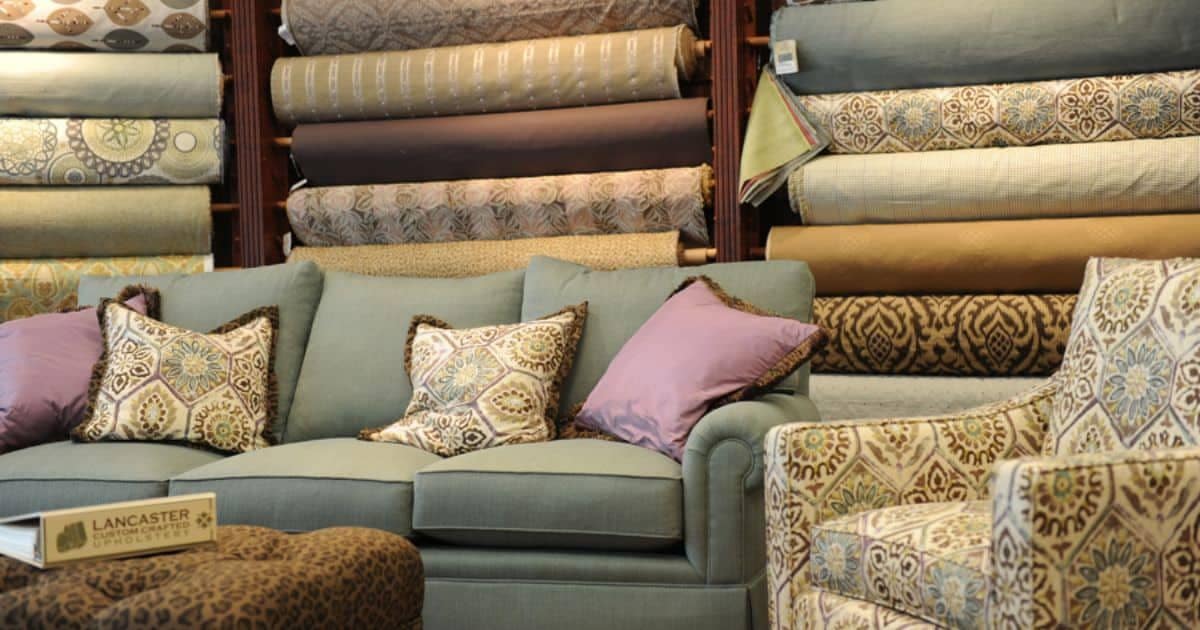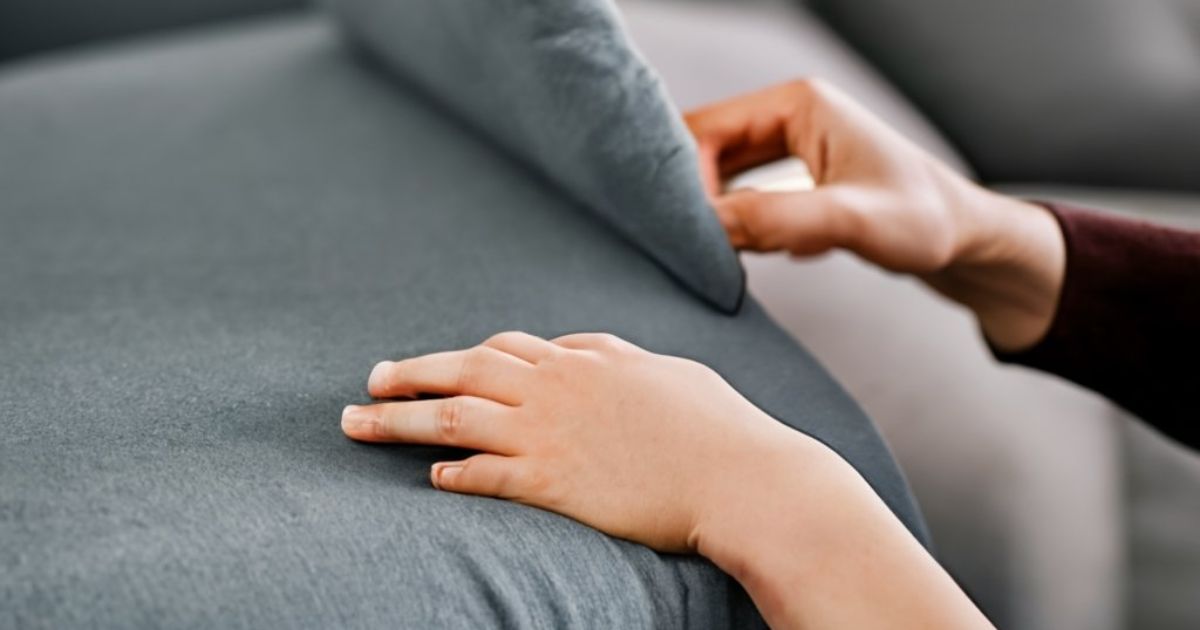Stretch the sofa cover over the sofa, tucking it into the seams and crevices. Sofa covers serve as a practical solution for maintaining the appearance and longevity of sofas. This article aims to provide a comprehensive guide on how to properly install a sofa cover. By adhering to best practices, individuals can ensure a snug fit and optimal protection for their furniture.
The article will discuss key steps such as measuring the sofa, selecting suitable fabric materials, and proper installation techniques. It will touch upon alternative options such as using fitted sheets as couch covers and offer pros and cons for consideration.
Key Takeaways
- Accurate measurements are essential for a proper fit of the slipcover.
- Proper alignment and draping of the fabric is crucial when putting the slipcover on the sofa.
- Consider the durability, texture, and color of the fabric when choosing a sofa cover.
- Thoroughly clean the sofa before placing the cover and regularly adjust the cover to maintain a smooth look.
Measuring Your Sofa
The first step in the process of putting on a sofa cover involves accurately measuring the dimensions of the sofa. This ensures that you select a slipcover that will fit properly and enhance the overall appearance of your sofa. To begin, measure the length from one armrest to the other, making sure to include any additional features such as cushions or decorative arms.
Next, measure the depth from the front edge of the seat to the backrest. Be sure to account for any protruding elements like buttons or tufting. Finally, measure the height from the floor to the highest point of your sofa’s backrest. These measurements will help you choose a slipcover that fits snugly and provides a neat and polished look for your sofa.
Putting the Slipcover on Your Sofa
To properly apply a slipcover onto a sofa, one must carefully align and drape the fabric according to the contours of the furniture. Begin by placing the slipcover over the sofa, ensuring that it is centered and covers the entire surface. Smooth out any wrinkles or creases in the fabric, starting from the center and working towards the edges. Tuck excess fabric into the gaps between cushions or along the sides of the sofa to create a neat appearance.
Use pins or clips to secure the slipcover in place if necessary. Once everything is aligned and draped correctly, adjust and smooth out any remaining wrinkles for a polished look. Taking these steps will ensure that your slipcover fits snugly on your sofa, providing both protection and aesthetic appeal.
Choosing the Right Fabric for Your Sofa Cover

When selecting an appropriate fabric for a slipcover, considerations such as durability, texture, and color should be taken into account. The fabric chosen should be able to withstand regular use and potential spills or stains. It should also have a texture that is comfortable to sit on and pleasant to touch. The color of the fabric should complement the overall aesthetic of the room in which the sofa is placed. To choose the right fabric for a slipcover, one can follow these steps:
- Determine the level of durability required based on how often the sofa will be used.
- Consider different textures such as smooth, textured, or patterned fabrics based on personal preferences.
- Select colors that harmonize with existing furniture and decor in order to create a cohesive look.
- Take into account any specific cleaning or maintenance requirements associated with different fabrics.
Tips for Installing a One Seater Sofa Cover

Installing a one-seater slipcover requires careful attention to proper alignment and adjustment, ensuring a neat and snug fit on the sofa. To begin, remove any existing cushions or pillows from the seat. Place the slipcover over the backrest and tuck it tightly into the crevices for a smooth appearance.
Next, stretch the cover across the arms of the sofa, making sure it is centered and symmetrical. Smooth out any wrinkles or excess fabric as you go along. Once the arms are covered, move on to draping the slipcover over the seat area, ensuring that it reaches all corners evenly. Secure any fasteners or ties provided with your slipcover to keep it in place. Transitioning into using a fitted sheet as a couch cover: pros and cons…
Using a Fitted Sheet as a Couch Cover: Pros and Cons
Using a fitted sheet as an alternative to a traditional couch cover presents advantages and disadvantages that should be considered. Advantages of using a fitted sheet as a couch cover:
- Easy installation: Fitted sheets are designed to fit snugly over the sofa, making them easy to put on and take off.
- Cost-effective: Compared to purchasing a specialized couch cover, fitted sheets are generally more affordable.
- Variety of options: Fitted sheets come in various colors, patterns, and materials, allowing for customization and matching with the home decor.
- Versatility: Fitted sheets can be used on different sizes and styles of sofas, providing flexibility in covering furniture.
Disadvantages of using a fitted sheet as a couch cover:
- Limited protection: Fitted sheets may not provide the same level of protection against spills or stains as specialized couch covers.
- Slippage: Due to their stretchy nature, fitted sheets may slip or become untucked during use, requiring frequent readjustments.
- Durability: Fitted sheets may not withstand heavy usage or frequent washing as well as dedicated couch covers.
- Aesthetics: While they offer versatility in terms of color and pattern options, some people may prefer the aesthetic appeal of traditional couch covers.
Best Practices for Installing a Sofa Cover
Moving on from the discussion of using a fitted sheet as a couch cover, we will now delve into the best practices for installing a sofa cover. Proper installation of a sofa cover is essential in achieving a neat and seamless appearance while protecting the underlying furniture. It is important to thoroughly clean and remove any debris or pet hair from the sofa before placing the cover.
This ensures that the cover fits snugly without any unsightly bumps or lumps. Carefully read and follow the manufacturer’s instructions for proper fitting and adjustment of the cover. Some covers may require tucking or securing with ties or elastic bands to ensure a secure fit. Regularly check and adjust the cover to maintain its smooth look over time. By adhering to these best practices, individuals can successfully install their sofa covers with ease and enjoy an enhanced aesthetic appeal for their furniture pieces.
FAQ’s
How can I cover my old sofa?
Slipcovers are great for hiding an ugly couch completely. Since they cover the whole sofa, your guests won’t see the ugliness underneath. Slipcovers come in many fabrics and lots of patterns to match almost any decorating style.
Is it easy to cover a sofa?
Do sofa covers really work?
Sommer suggests that using covers is a simple way to give your space a new look without spending a lot on a new sofa. Covers can also help keep your expensive furniture safe from kids and pets who might make it messy.
Conclusion
In conclusion, this article has provided detailed and informative guidelines on how to put a sofa cover on. By measuring your sofa accurately and choosing the right fabric, you can ensure a perfect fit for your slipcover. The tips for installing a one-seater sofa cover and the pros and cons of using a fitted sheet as a couch cover offer alternative options to consider. Following these best practices will help you effortlessly transform the look of your sofa while protecting it from wear and tear.








